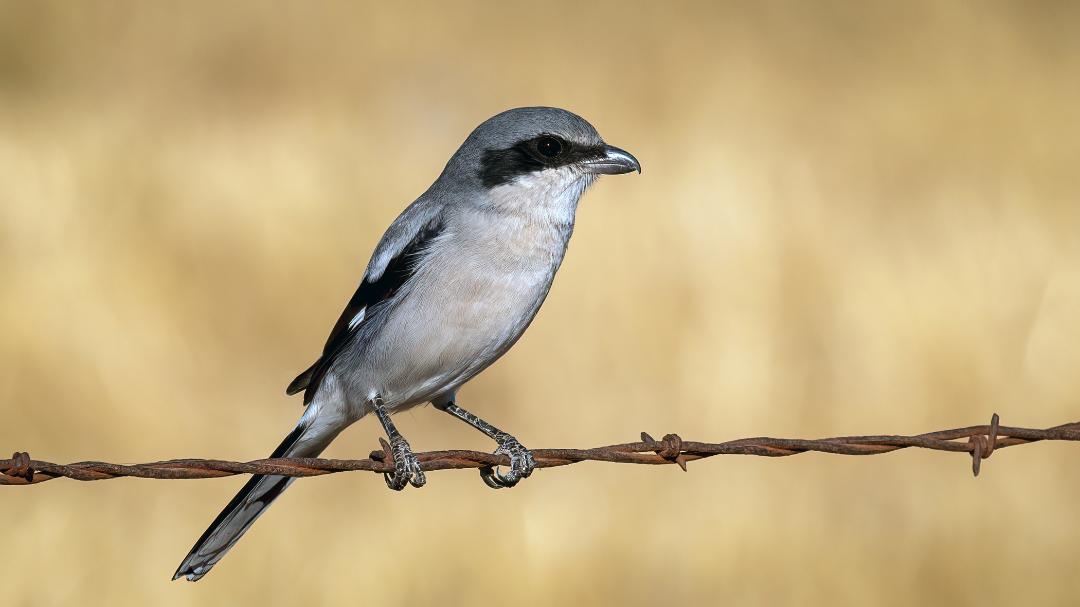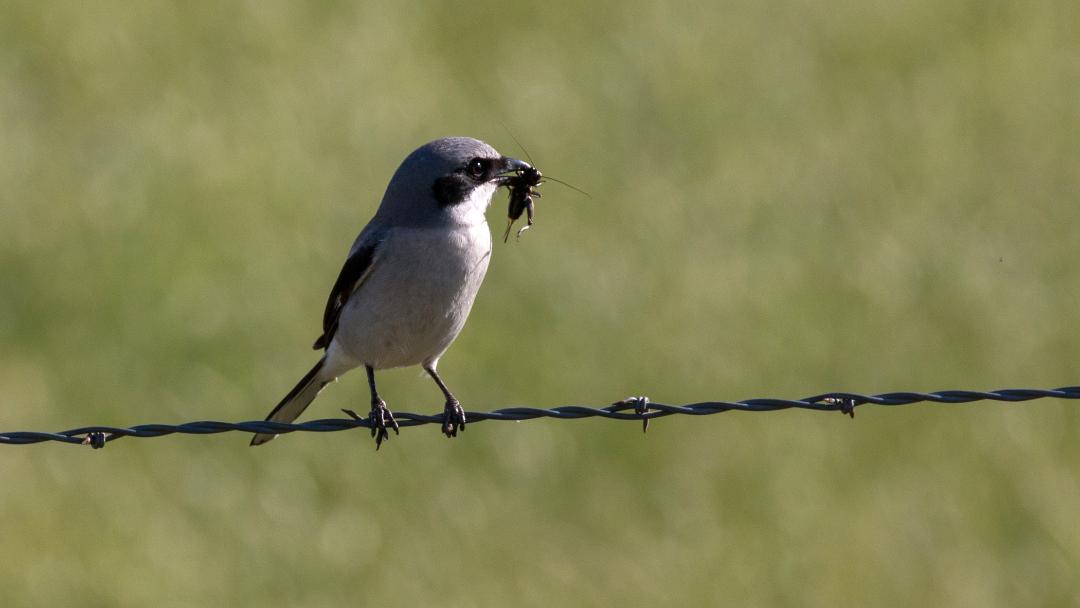The Loggerhead Shrike is a Fairly Common Resident in the San Joaquin Valley and can be found in grasslands, freshwater wetlands and chaparral habitats. There are two species of shrike regularly found in the US, the Loggerhead Shrike and the Northern Shrike. However, the Northern Shrike is a very rare vagrant to the Central Valley.
Status
Loggerhead Shrikes are currently considered a California Bird Species of Special Concern (breeding), priority 2. Over their historic range, numbers are slightly declining overall with a dramatic drop in breeding populations in the southern part of the state, most likely due to loss of grasslands habitat. This species was described as common to abundant in the San Joaquin Valley in 1927 by Grinnell and Wythe, but recent Christmas Bird Count (CBC) results show an accelerated statewide decline from 1959 to 1988. (See California Bird Species of Special Concern Report)
Description
The Loggerhead Shrike is one of two shrikes regularly found in the US, but is the most expected shrike in the San Joaquin Valley. Its close cousin, the Northern Shrike is a very rare winter visitor here with only one record in Stanislaus County. Roughly the size of a starling, this gray and white perching bird can frequently be seen along roads hanging on to a barbed-wire fence. Its large head and bold black mask distinguish the Loggerhead Shrike from the similar colored Northern Mockingbird.
Habits
When disturbed, the Loggerhead Shrike will drop down and fly low along the ground before swooping up to gain another perch. The Loggerhead Shrike is quite the bold predator, often taking on large prey and then impaling it on a barbed-wire snag or nearby plant thorn. It has been given the nickname of “butcher bird” due to this curious, yet gruesome behavior.
Loggerhead Shrike by Jim Gain
Distribution
More common in the winter than in the summer, Loggerhead Shrikes can be found in open areas such as grasslands and wetlands. They can frequently be seen along the grasslands bordering eastern valley roads (Merced Falls Rd., Willms Rd., Sonora Rd.) or in the grasslands and wetlands areas (Santa Fe Grade, Sandy Mush Rd.) in Merced County. Check out the eBird Loggerhead Shrike species map.
Simliar Species
Though very rare in the Central Valley, the Northern Shrike is very similar in appearance to the Loggerhead Shrike. Northern Shrikes are bigger than Loggerheads. They have a larger, more strongly hooked bill. Other reliable marks include the Northern’s narrower black mask that usually does not continue in front of their eye (or continue above the bill), and the Northern’s more strongly barred underparts. Both these field marks can be difficult to see in the field.
See more of Jim Gain’s fine images and writing here.










Jim:
What a needed contribution to knowledge of our local birds. Now we get to read your narration along with your unexcelled photography.
Thank you and please keep these flowing… into a book in the future?